Cotyledon Succulent is a genus of succulents within the family Crassulaceae. Though most species are native to Southern Africa, some grow as far north as the Arabian Peninsula.
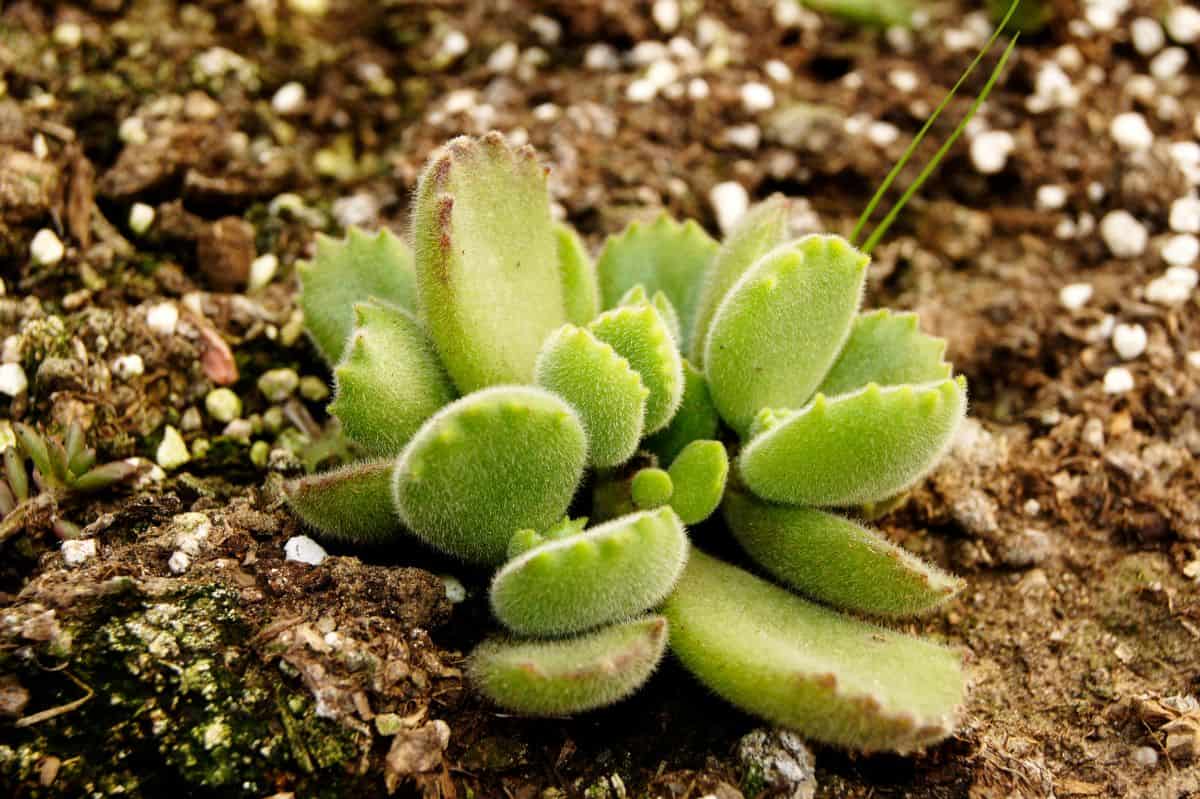
There are less than two dozen species in this genus. Members of this genus are shrub-like succulents. Cotyledon differ from some other genera in the Crassulaceae family in that each leaf pair is oriented at about 90 degrees to the preceding and following pairs of leaves.
Most members of Cotyledon have tubular flowers and globular brown seeds.
Prior to the 1960’s, there were approximately 150 species in Cotyledon, but since that time, the majority of those species have been moved to different genera.
A unique feature of Cotyledon is that most plants in this genus are poisonous if consumed. Some have even been reported to be fatal in livestock and poultry, but some have also been used topically in traditional medicine.
Jump to:
Species of Cotyledon
| Name: | Cotyledon |
| Soil: | Well-drained soil |
| Blooming: | Summer |
| Light: | Full sun to partial shade |
| Water: | When the soil is completely dry |
| Propagation: | Leaf cuttings or seeds |
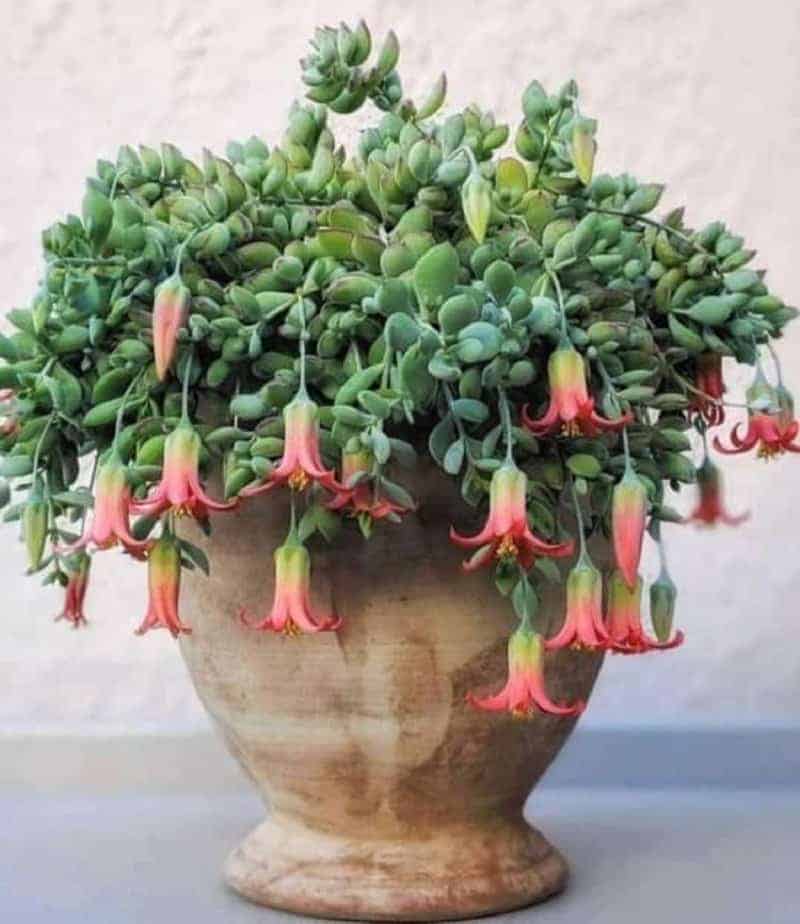
One of the most popular members of this genus is Cotyledon tomentosa, also known as Bear’s Paw. This species features flat, hairy leaves with reddish teeth on the end. The leaves are similar in shape to paws, leading to their unique name. There is also a variegated cultivar of Bear’s Paw.
Cotyledon pendens is another popular species of trailing succulent. The fleshy leaves are shaped like teardrops and can form a thick cascade of up to two feet in length. This species is also known for its vibrant pink blooms.
Another species named after animal parts is Pig’s Ear, or Cotyledon orbiculata. Pig’s Ear, as you might guess, has large silvery leaves similar in shape to pigs’ ears. The leaves feature a silver wax coating or farina, which helps protect the plant from strong sunlight. There is also a variety of this species known as ‘Gray Sticks’ that has oblong leaves.
Caring for Cotyledon

Cotyledon are relatively easy to care for. They are quite hardy as long as their basic needs are met. They can be grown indoors with ease as well as outdoors, provided the climate is warm enough.
No products found.
Some species are trailing succulents while others are bushier, so the Cotyledon genus contains plants for nearly every situation. They may not be the flashiest plants, but they all have a unique appearance sure to draw attention.
See Related Article: Banana Succulent
Light
Cotyledon grow best in partial to full sun, depending on the species. When grown indoors, they thrive on bright, indirect light. A south, east, or west facing window will suit most species of Cotyledon well.
Although Cotyledon enjoy plenty of sun, they should be not be thrust into full sun without time to adapt. Increasing light levels too quickly can result in sunburn.
These are not plants that are ideal for low light environments, but they can be grown successfully with grow lights, so if your home or office is lacking in light, don’t count Cotyledon out yet.
Water
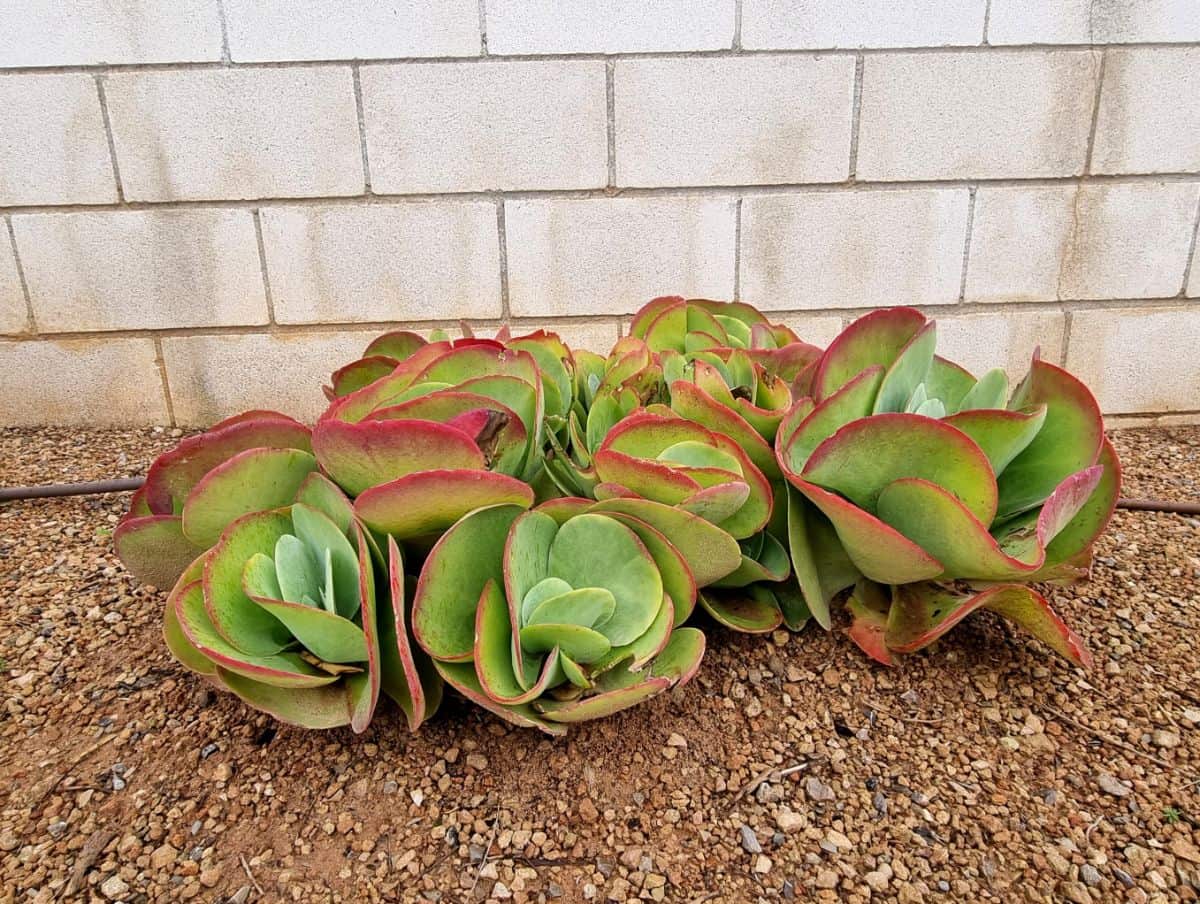
Cotyledon enjoy the same watering techniques as most species of succulent. Deep but infrequent watering will work best.
It’s recommended to water Cotyledon until water can be seen coming out of the drainage hole in the bottom of the container. The plant should not be watered again until the soil feels dry.
Frequent watering or overly moist soil puts Cotyledon at risk of rotting. Like most succulents, they are quite tolerant of dry conditions, but overly wet conditions should be avoided at all costs.
Temperature
If you live in a climate where temperatures regularly dip below freezing, you won’t be able to keep Cotyledon outdoors year-round. This is not a frost tolerant genus of plants, so if you experience cold winters, you can expect to bring your Cotyledon indoors for the winter.
Some species of Cotyledon handle extreme heat better than others, so if you live in a place where it gets extremely hot in the summer, you should consider researching the specific species of Cotyledon you’re interested in to make sure it can handle living outdoors.
See Related Topic: Elephant Succulent
Soil
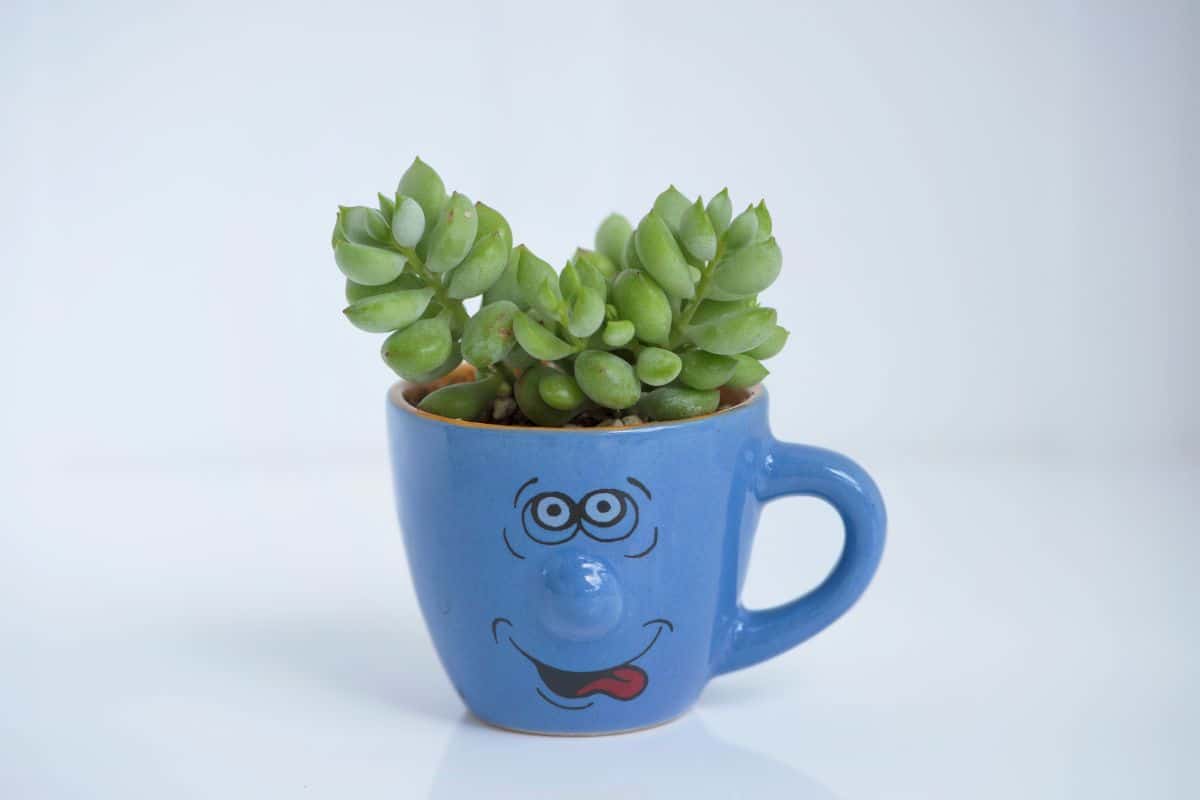
Cotyledon prefer well-draining soil with a mineral content of between 70% and 80%. Water retaining materials like clay and peat moss should be avoided as they may make the soil too soggy and cause the roots to rot.
Soil formulated for cacti and other succulents is ideal for Cotyledon. Whether you prefer a commercial soil mix or making your own, make sure it drains properly.
Type of Container
Most species of Cotyledon are quite adaptable and can grow in most types of container. Plastic, ceramic, and terra cotta pots are all good choices, and most gardeners have a preference. As long as their needs are met, Cotyledon can grow anywhere.
The most important feature of a pot to consider is drainage. Well-draining soil will do no good if there’s nowhere for the water to drain. Drainage holes are necessary in keeping Cotyledon happy and healthy.
Propagating Cotyledon
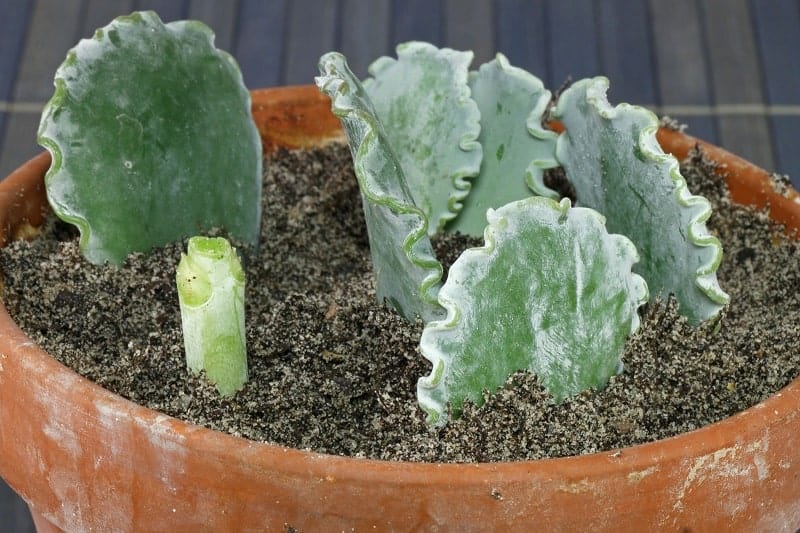
Cotyledon be propagated through stem or leaf cuttings or seeds, though cuttings are the more popular method. Growing Cotyledon from seed is a time-consuming process with a lower rate of success, so most gardeners choose the former option.
Some species of Cotyledon have naturally fragile leaves that may fall off during handling. Propagation is a great way to make sure those leaves don’t go to waste and gives you the opportunity have more plant for yourself or friends.
Stem propagation is the more common method as it basically gives you more immediate results. Stem cuttings are basically miniature plants once rooted, whereas leaf cuttings have quite a bit more growing to do.
Propagating Cotyledon with cuttings is as simple as removing leaves or stems with a sharp, sterile knife or pair of scissors. Sharp tools are preferred to minimize damage to the cuttings.
After you’ve collected your cuttings, they need to sit out for a few days before planting. This time allows the cuts to callous, protecting the cuttings from potential infection.
Once calloused, the cuttings can be placed into soil to root. Rooting hormone is optional, but it may help the cuttings to grow roots more quickly. After the cuttings have rooted, you can care for your new Cotyledon as you normally would.
You Might Also Like:

